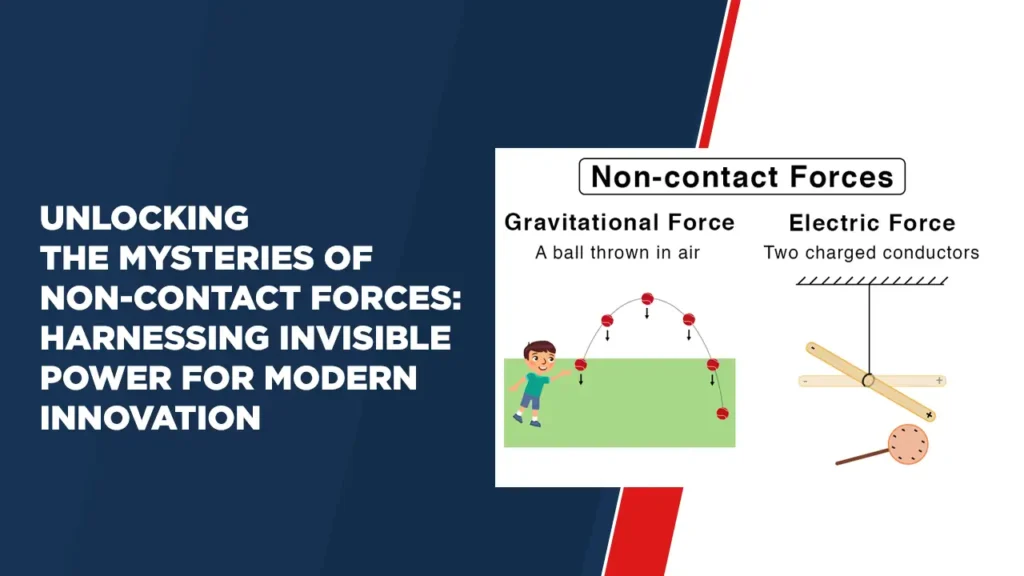Unlocking the Mysteries of Non-Contact Forces: Harnessing Invisible Power for Modern Innovation
Introduction
In the field of physics, forces govern the interactions between objects, shaping the world around us. While contact forces, such as friction and tension, are familiar, non-contact forces play an equally important role in shaping our understanding of the universe. Non-contact forces are those that can affect the motion of an object without physical contact, and they hold the key to explaining phenomena ranging from the tides caused by the Moon’s gravitational pull to the repulsion between two magnets. In this article, we will provide examples to clarify the concept of non-contact forces, their types, and their importance.
What is Non-Contact Force?
Non-contact forces are interactions between objects that occur without any physical touch or direct connection. These forces act in free space and can have a significant impact on the behavior of an object. Unlike contact forces, which require objects to be in direct contact, non-contact forces can act over long distances.
Types of Non-Contact Forces
There are several types of non-contact forces that play a fundamental role in explaining various natural phenomena:
- Gravitational Force:
Gravitational force is a prime example of non-contact force. Every object with mass attracts other objects with mass. This force is responsible for keeping the planets in orbit around the Sun and causing objects to fall toward the Earth’s surface.
2. Electromagnetic force:
This force includes both electric and magnetic forces. Objects with electrical charges, such as protons and electrons, experience electrical forces that can attract or repel. Similarly, magnetic forces affect objects with magnetic properties.
3. Magnetic forces:
Objects with magnetic properties, such as magnets, can exert attractive or repulsive forces on each other. The Earth’s magnetic field also interacts with magnetic materials.
Examples of Non-Contact Forces
Let’s look at some real-world examples of non-contact forces:
- Gravitational force:
The Moon’s gravitational force causes tides in Earth’s oceans, which shows the profound effect this force has on large bodies of water.
2. Electromagnetic force:
The interaction between the compass needle and the Earth’s magnetic field represents the magnetic force. Similarly, lightning is the result of the creation and discharge of electrical charges in the atmosphere.
3. Magnetic Force:
When you bring two magnets together, you can feel a force attracting or repelling them, depending on their orientation.
Pictures of Non-Contact Force
[Insert relevant pictures depicting examples of gravitational, electromagnetic, and magnetic forces.]
Conclusion
Noncontact forces are invisible threads that shape interactions between objects on a variety of scales, from tiny particles to the grand movements of celestial bodies. Gravitational, electromagnetic, and magnetic forces are just a few examples of the complex dynamics that define our universe. Understanding these forces not only deepens our understanding of the natural world but also lays the groundwork for technological innovations that harness their power for the good of society. Whether it’s the ebb and flow of tides or the functionality of everyday electronics, non-contact forces are actually the driving forces behind the scenes.




